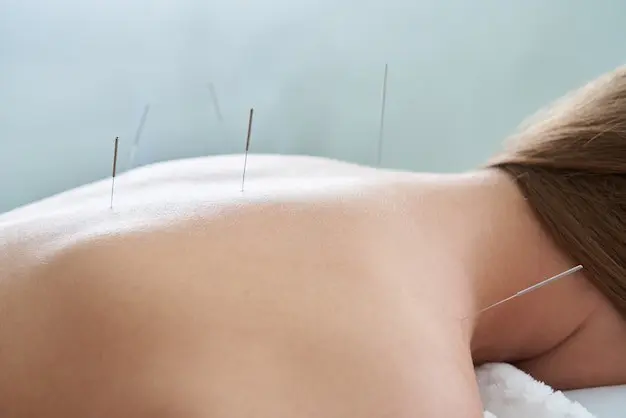
Benefits of Acupuncture in Pain Management
Pain in the hands and feet can significantly impact daily life, making simple activities like walking, writing, or even holding objects difficult. Conditions such as arthritis, neuropathy, carpal tunnel syndrome, plantar fasciitis, and repetitive stress injuries often cause discomfort, stiffness, and inflammation. While conventional treatments like medication and physical therapy may provide relief, many people seek natural, holistic approaches to managing pain.
Acupuncture, a time-tested practice rooted in Traditional Chinese Medicine (TCM), offers an effective, non-invasive solution for reducing foot and hand pain and improving overall well-being.
Understanding Acupuncture and Its Role in Pain Management
Acupuncture involves inserting thin, sterile needles into specific points of the body to stimulate energy flow (Qi) and promote healing. By targeting meridian pathways, acupuncture helps balance the body’s natural functions, reducing inflammation and enhancing circulation. This ancient practice has been used for thousands of years to address pain, stress, and various health conditions.
How Acupuncture Helps Relieve Foot and Hand Pain?
Acupuncture works by:
- Stimulating the nervous system to release endorphins, the body’s natural painkillers.
- Increasing blood circulation to affected areas, speeding up healing.
- Reducing inflammation by modulating immune responses.
- Relaxing muscles and relieving tension.
- Restoring balance to the body’s energy pathways (meridians) to support overall health.
Many patients report feeling an immediate sense of relief and relaxation after treatment, while others notice gradual improvements over multiple sessions.
Common Foot and Hand Conditions Treated with Acupuncture
Below is a table of common conditions acupuncture treatment for foot pain and hand pain can help with:
| Condition | Symptoms | How Acupuncture Helps |
| Plantar Fasciitis | Heel pain, stiffness | Reduces inflammation, improves circulation |
| Arthritis | Joint pain, swelling | Lowers inflammation, improves mobility |
| Neuropathy | Numbness, tingling, burning pain | Stimulates nerve function, enhances blood flow |
| Carpal Tunnel Syndrome | Wrist pain, weakness | Reduces nerve compression, relaxes muscles |
| Tendonitis | Swelling, tenderness | Reduces inflammation, promotes healing |
| Repetitive Stress Injuries | Stiffness, discomfort | Enhances mobility, relieves tension |
What to Expect During an Acupuncture Session?
- Consultation: The practitioner assesses your symptoms, medical history, and lifestyle habits.
- Treatment Plan: Points on the hands, feet, and related meridians are selected for needle placement.
- Needle Insertion: Fine needles are inserted at targeted acupuncture points and left for 15-30 minutes.
- Additional Therapies: Techniques such as heat therapy, cupping, or herbal remedies may be used to enhance treatment.
- Post-Treatment Care: Advice on dietary adjustments, exercises, and follow-up sessions is provided to optimize results.
Many patients describe acupuncture as a deeply relaxing experience, often feeling a sense of calm and well-being after their session.
Additional Benefits of Acupuncture Beyond Pain Management
Aside from relieving pain, acupuncture offers:
- Stress Reduction: Promotes relaxation and reduces anxiety.
- Improved Sleep: Helps regulate sleep patterns for better rest.
- Enhanced Digestion: Supports gut health and metabolism.
- Boosted Immunity: Strengthens the body’s natural defenses.
- Increased Energy Levels: Reduces fatigue and enhances vitality.
- Mental Clarity: Improves focus and concentration, helping individuals stay more productive and engaged in daily life.
Frequently Asked Questions About Acupuncture Treatment
- How many sessions are needed for pain relief?
The number of sessions varies, but most patients notice improvement within 3-6 treatments. Some chronic conditions may require ongoing care for optimal results.
- Is acupuncture painful?
No, most people experience minimal discomfort, often describing it as a mild tingling sensation or a feeling of warmth around the needle insertion points.
- Can acupuncture be combined with other treatments?
Yes, acupuncture complements physical therapy, massage, and conventional medicine. It can enhance the effects of these treatments and provide a holistic approach to pain management.
- Are there any side effects?
Acupuncture is generally safe when performed by a trained professional. Some patients may experience minor bruising or soreness at needle sites, but serious side effects are rare.
Lifestyle Tips to Enhance the Effects of Acupuncture
To maximize the benefits of acupuncture for foot and hand pain, consider incorporating the following lifestyle habits:
- Stay Hydrated: Drinking enough water supports circulation and detoxification.
- Maintain a Balanced Diet: Eating anti-inflammatory foods like leafy greens, berries, and healthy fats can promote healing.
- Practice Gentle Exercise: Yoga, Tai Chi, and stretching can complement acupuncture by enhancing mobility and flexibility.
- Get Enough Rest: Proper sleep is essential for the body’s natural healing process.
- Reduce Stress: Engaging in relaxation techniques such as meditation and deep breathing can improve overall well-being and pain management.
Why Acupuncture is an Effective Solution for Pain Relief?
Acupuncture provides a safe, natural, and effective way to relieve foot and hand pain without relying on medications or invasive procedures. By improving circulation, reducing inflammation, and promoting overall balance, acupuncture helps restore function and enhance quality of life.
So, if you’re struggling with persistent foot or hand pain, consider trying acupuncture. Schedule an appointment with Middle Path Acupuncture today and take the first step toward lasting pain relief.
